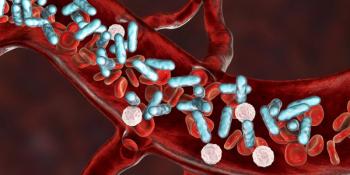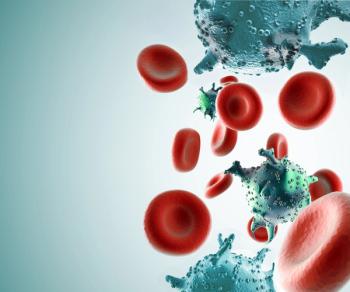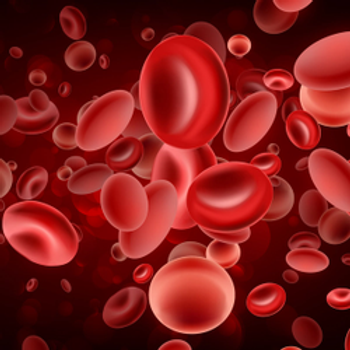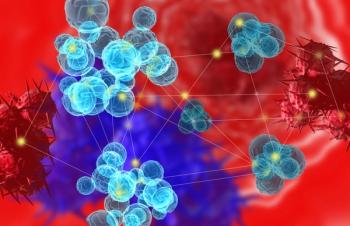
Carfilzomib Regimens Improve MRD Outcomes in Older, Fit NDMM Population
Phase 3 findings may contribute to the selection of triplet or quadruplet therapies in newly diagnosed multiple myeloma via frailty-based assessments.
Carfilzomib (Kyprolis) plus lenalidomide (Revlimid) and dexamethasone alone (KRd) or in combination with daratumumab (Darzalex; D-KRd) improved measurable residual disease (MRD) negativity vs a regimen consisting of melphalan (Alkeran) plus prednisone, bortezomib (Velcade), lenalidomide, and dexamethasone (VMP-Rd) in patients who were older and fit with newly diagnosed multiple myeloma (NDMM) in the phase 3 GEM2017FIT trial (NCT03742297).1 Investigators published these findings in The Lancet Haematology.
At a sensitivity of 10–5, the undetectable MRD rate after 18 cycles was 54% in the KRd arm (OR, 1.73; 95% CI, 1.39-2.16; P < .0001), 61% in the D-KRd arm (OR, 2.03; 95% CI, 1.61-2.57; P < .0001), and 27% in the VMP-Rd arm. With a sensitivity of 10–6, the undetectable MRD rates were 47% with KRd (OR, 1.74; 95% CI, 1.41-2.15; P < .0001), 58% with D-KRd (OR, 2.14; 95% CI, 1.71-2.68; P < .0001), and 21% with VMP-Rd. The progression-free survival (PFS) rate at 30 months was 73% with VMP-Rd vs 83% with KRd (HR, 0.58; 95% CI, 0.38-0.88; P = .014) and 79% with D-KRd (HR, 0.57; 95% CI, 0.37-0.89; P = .013).
Based on exploratory analyses, the 10–5 MRD negativity rate at 9 and 18 cycles, respectively, was 51.9% and 53.9% with KRd as well as 61.4% at both points with D-KRd. Between cycles 9 and 18, the undetectable MRD rate increased from 13% to 27% in the VMP-Rd arm.
“The present trial shows that KRd and D-KRd are superior to [VMP-Rd] as induction therapy in terms of undetectable [MRD] rate after 18 cycles, which is particularly relevant for certain high-risk subpopulations, such as those with high-risk cytogenetic abnormalities,” lead study author María-Victoria Mateos, PhD, a consultant physician in the Hematology Department and an associate professor of medicine at the University of Salamanca in Spain, wrote with coauthors in the publication.1 “This trial is ongoing and the translation of this superiority in terms of final outcomes is pending. Our study will contribute to the selection of triplets or quadruplets based on geriatric scales such as Geriatric Assessment in Hematology [GAH], which can predict toxicity and early mortality.”
In the open-label GEM2017FIT trial, 462 patients were randomly assigned to receive VMP-Rd (n = 154), KRd (n = 154), or D-KRd (n = 154). Treatment in the VMP-Rd arm consisted of a 6-week cycle of melphalan at 9 mg/m2 and prednisone at 60 mg/m2 on days 1 to 4, bortezomib at 1.3 mg/m2 subcutaneously twice weekly followed by eight 4-week cycles of weekly VMP, nine 4-week cycles of lenalidomide at 25 mg on days 1 to 21, and dexamethasone at 40 mg weekly. Patients in the KRd arm received carfilzomib at 20 mg/m2 intravenously on day 1 or 36 mg/m2 on days 1, 2, 8, 9, 15, and 16 in the first 2 cycles and then 56 mg/m2 in cycles 3 to 18 in combination with lenalidomide and dexamethasone. Those in the D-KRd arm received the carfilzomib triplet plus daratumumab at 16 mg/kg intravenously each week for the first 2 cycles, biweekly for cycles 3 to 6, and then every 4 weeks in cycles 7 to 18.
The trial’s primary end point was undetectable MRD at a threshold of 10–5 per next-generation flow cytometry. Secondary end points included objective response rate, PFS, overall survival, and safety.
Patients aged 65 to 80 years with NDMM requiring active treatment based on 2014 International Myeloma Working Group guidelines, fitness status based on a score of no more than 42 on the GAH scale, and measurable disease were eligible for enrollment in the trial.2 Other eligibility criteria included having an ECOG performance status of 0 to 2, a life expectancy of more than 3 months, and adequate organ function.
The median age was 72 years (IQR, 72-76) in the VMP-Rd arm, 73 years (IQR, 71-76) in the KRd arm, and 73 years (IQR, 71-76) in the D-KRd arm. Across each arm, 51% to 65% had IgG disease, 66% to 69% had International Staging System stage I or II disease, and 82% to 86% had an ECOG performance status of 0.
The mean GAH scores were 18.25 in the VMP-Rd arm, 19.90 in the KRd arm, and 19.35 in the D-KRd arm. In a post hoc analysis of patients with a GAH score of less than 20, the 30-month PFS rate was 88% with D-KRd vs 80% with VMP-Rd (P = .050). Among those with a GAH score of 20 or higher, the 30-month PFS rate was 91% with KRd and 65% with VMP-Rd (P = .010).
Grade 3/4 neutropenia occurred in 24% of the KRd arm, 40% of the VMP-Rd arm, and 41% of the D-KRd arm. In each respective group, grade 3/4 thrombocytopenia affected 14%, 29%, and 15%; grade 3/4 infections were reported in 15%, 12%, and 16%; and grade 3/4 cardiovascular toxicity affected 10%, 5%, and 14%.
References
- Mateos MV, Paiva B, Cedena MT, et al. Induction therapy with bortezomib, melphalan, and prednisone followed by lenalidomide and dexamethasone versus carfilzomib, lenalidomide, and dexamethasone with or without daratumumab in older, fit patients with newly diagnosed multiple myeloma (GEM-2017FIT): a phase 3, open-label, multicentre, randomised clinical trial. Lancet Haematol. 2025;12(8):e588-e598. doi:10.1016/S2352-3026(25)00143-7
- Treatment for elderly fit newly diagnosed multiple myeloma patients aged between 65 and 80 years. ClinicalTrials.gov. Updated September 14, 2022. Accessed August 13, 2025. https://tinyurl.com/57k37zy9
Newsletter
Stay up to date on recent advances in the multidisciplinary approach to cancer.

















































































